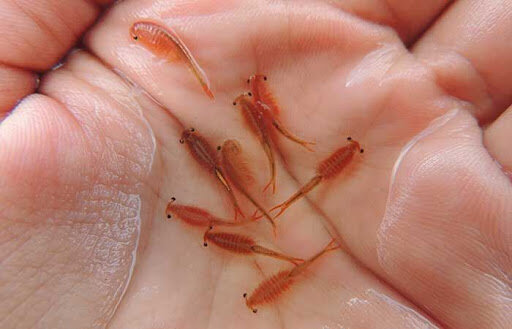Artemia: a multi-million dollar source of income in Lake Urmia

TEHRAN – Artemia of Lake Urmia is of great commercial value and if exported, it will be a multi-million-dollar source of income for the country, Salman Zaker, a member of the Majlis (Iranian parliament) has said.
So far, 9 species of Artemia have been registered in the world, he said, adding, one of the most important species of Artemia is “Artemia Urmiana”, which lives in Lake Urmia, he said.
Natural conditions and infrastructure for farming Artemia in Lake Urmia are available but it is not exploited, Zaker noted, IRNA reported on Sunday.
Iran is now one of the importers of Artemia. By cultivating Artemia in the country, not only a considerable amount of foreign currency can be saved, but millions of dollars of foreign exchange can enter the country by exporting it, he also highlighted.
Emphasizing the need to breed Artemia in the country and support the private sector in this regard, Zaker said that artificial breeding of Artemia in the southern part of the country should also be considered.
Each kilogram of medium quality Artemia is about 35 million rials (nearly $833,000) and it was claimed that exploiting the full capacity of the species in Lake Urmia could make West Azerbaijan independent of the government budget, he stated.
Iran is now one of the importers of Artemia; According to the assessment of the average capacity of Lake Urmia in 2019, the reserves of Lake Urmia in normal conditions, in addition to meeting domestic needs, can lead to the annual export of 180 tons of cysts and 120 tons of live Artemia to other countries.
Artemia
Artemia is a genus of aquatic crustaceans also known as brine shrimp. The first historical record of the existence of Artemia dates back to the first half of the 10th century AD from Lake Urmia, with an example called by an Iranian geographer an "aquatic dog", although the first unambiguous record is the report and drawings made by Schlösser in 1757 of animals from Lymington, England.
Artemia populations are found worldwide in inland saltwater lakes, but not in oceans. Artemia is able to avoid cohabiting with most types of predators, such as fish, by their ability to live in waters of very high salinity (up to 25%).
The ability of Artemia to produce dormant eggs, known as cysts, has led to extensive use of Artemia in aquaculture. The cysts may be stored for long periods and hatched on demand to provide a convenient form of live feed for larval fish and crustaceans.
Nauplii of the brine shrimp Artemia constitute the most widely used food item, and over 2000 tons of dry Artemia cysts are marketed worldwide annually. In addition, the resilience of Artemia makes them ideal animals for running biological toxicity assays and it has become a model organism used to test the toxicity of chemicals. Breeds of Artemia are sold as novelty gifts under the marketing name Sea-Monkeys or Aqua Dragons.
FB/MG
